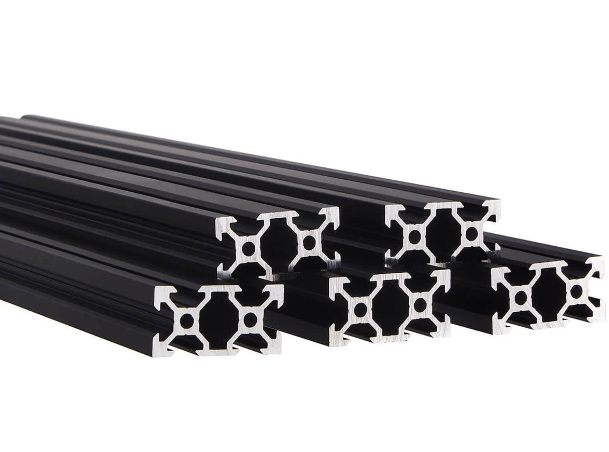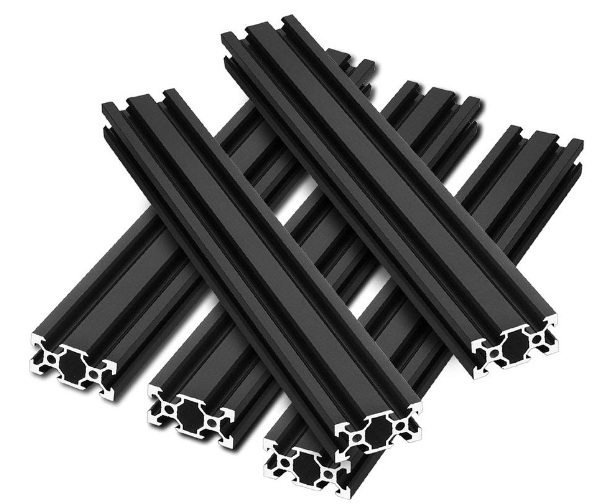Content Menu
● Understanding the 2040 Aluminum Extruder
>> Key Features of the 2040 Aluminum Extruder
● Compatibility with Various 3D Printers
● Benefits of Using a 2040 Aluminum Extruder
● How to Integrate a 2040 Aluminum Extruder into Your Printer
● Common Applications of 2040 Aluminum Extruders
● Considerations When Selecting a 2040 Aluminum Extruder
● Conclusion
● FAQ
>> 1. What is a 2040 Aluminum Extruder?
>> 2. Can I use a 2040 Aluminum Extruder on any 3D printer?
>> 3. What materials are compatible with a 2040 Aluminum Extruder?
>> 4. How do I install a 2040 Aluminum Extruder?
>> 5. Are there any downsides to using a 2040 Aluminum Extruder?
● Citations:
3D printing has revolutionized the way we create and manufacture objects, allowing for rapid prototyping and customization. One of the key components in many 3D printers is the aluminum extruder, particularly the "2040 aluminum extruder". This article will explore whether the "2040 aluminum extruder" is compatible with various 3D printers, its benefits, and how to integrate it into your existing setup.

Understanding the 2040 Aluminum Extruder
The 2040 aluminum extruder refers to a specific type of aluminum profile that measures 20mm x 40mm. This profile is commonly used in the construction of 3D printers due to its strength, durability, and versatility. The design allows for easy assembly and modification, making it a popular choice among DIY enthusiasts and professionals alike.
Key Features of the 2040 Aluminum Extruder
- Durability: Made from high-quality aluminum alloy (typically 6063-T5), the 2040 extruder aluminum is resistant to corrosion and wear.
- Modularity: The V-slot design allows for easy integration with various components, enabling users to customize their printer frames.
- Lightweight: Despite its strength, the aluminum profile is lightweight, which is crucial for maintaining print quality at high speeds.
- Compatibility: The 2040 aluminum extruder can work with standard T-slot accessories, making it versatile for different applications.
Compatibility with Various 3D Printers
When considering whether the 2040 aluminum extruder is compatible with your 3D printer, several factors come into play:
1. Printer Frame Design: The compatibility largely depends on your printer's frame design. Most modern 3D printers that utilize aluminum profiles can accommodate the 2040 extrusion.
2. Mounting Options: Ensure that your printer's mounting system can support the dimensions of the 2040 extruder aluminum. Many printers have adjustable mounts that can fit different profile sizes.
3. Extrusion System: If your printer uses a Bowden or direct drive system, check if the existing setup can be modified to integrate the 2040 extruder without significant alterations.
4. Weight Considerations: While the 2040 aluminum extruder is lightweight, ensure that your printer's motors can handle any additional weight if you are adding more components.
5. Community Feedback: Engaging with online forums or communities dedicated to 3D printing can provide insights into specific models that have successfully integrated the 2040 extruder aluminum.
Benefits of Using a 2040 Aluminum Extruder
Integrating a 2040 aluminum extruder into your 3D printing setup offers several advantages:
- Enhanced Stability: The rigidity of the aluminum profile minimizes vibrations during printing, leading to higher print quality and precision.
- Customizable Designs: Users can easily modify their printer designs by incorporating additional features such as enclosures or larger build areas using the modularity of the extrusion.
- Improved Print Speed: With reduced weight and enhanced stability, printers using the 2040 extruder aluminum can achieve faster print speeds without sacrificing quality.
- Cost-Effectiveness: Aluminum extrusion profiles are often more affordable compared to other materials while providing excellent strength and durability over time[5].

How to Integrate a 2040 Aluminum Extruder into Your Printer
If you decide to upgrade your printer with a 2040 aluminum extruder, follow these steps:
1. Assess Your Current Setup: Take measurements of your existing frame and determine how much of it can be replaced or upgraded with the new extrusion.
2. Purchase Required Components: Acquire enough lengths of the 2040 extrusion, along with necessary connectors and brackets for assembly.
3. Disassemble Your Printer Frame (if necessary): Carefully take apart parts of your existing frame that will be replaced by the new extrusion.
4. Assemble New Frame Sections: Use T-nuts and bolts to secure the new pieces together, ensuring everything is aligned correctly.
5. Reattach Components: Once your new frame is assembled, reattach all electronic components and wiring carefully.
6. Test Your Printer: Run test prints to ensure everything functions smoothly and make adjustments as needed.
Common Applications of 2040 Aluminum Extruders
The versatility of the 2040 aluminum extruder extends beyond just 3D printing frames. Here are some common applications:
- CNC Machines: Many CNC machines utilize similar extrusion profiles for their frames due to their strength and stability.
- Laser Cutters/Engravers: The rigidity provided by these profiles ensures accurate cutting and engraving.
- Robotics Projects: The lightweight nature makes it ideal for building robotic arms or mobile bases.
- Furniture Design: Custom furniture projects often employ these profiles due to their aesthetic appeal and structural integrity.
- DIY Projects: Hobbyists frequently use these profiles in various custom builds ranging from storage solutions to display stands[2][4].
Considerations When Selecting a 2040 Aluminum Extruder
While considering a switch to or integration of a 2040 aluminum extruder, keep in mind:
- Not all manufacturers adhere strictly to dimensional standards; variations in slot sizes may exist[7].
- Ensure compatibility with existing hardware; some accessories designed for T-slot may not fit V-slot profiles properly[8].
- Check for weight ratings; larger setups may require additional support structures depending on what you intend to mount on them[6].
Conclusion
In conclusion, the compatibility of a 2040 aluminum extruder with your 3D printer largely depends on your printer's design and existing components. With its numerous benefits such as enhanced stability, modularity, and improved print speeds, upgrading to a 2040 extrusion system can significantly enhance your printing capabilities. Always ensure that you consider compatibility factors before making any modifications.

FAQ
1. What is a 2040 Aluminum Extruder?
The "2040 aluminum extruder" is an aluminum profile measuring 20mm x 40mm used in building sturdy frames for various applications including 3D printers.
2. Can I use a 2040 Aluminum Extruder on any 3D printer?
Not all printers are compatible; it depends on your printer's frame design and mounting options.
3. What materials are compatible with a 2040 Aluminum Extruder?
The extrusion works well with various materials including PLA, ABS, PETG, and more depending on your printer's capabilities.
4. How do I install a 2040 Aluminum Extruder?
Installation involves assessing your current setup, purchasing necessary components, assembling new frame sections, and testing your printer after modifications.
5. Are there any downsides to using a 2040 Aluminum Extruder?
Potential downsides include needing precise measurements for compatibility and possible additional weight affecting motor performance if not properly managed.
Citations:
[1] https://www.3dwasp.com/en/delta-3d-printer-delta-wasp-2040-pro/
[2] https://novo3d.in/aluminium-profile-2040/
[3] https://www.instructables.com/Make-a-Polar-3D-Printer-Spinning-Bed/
[4] https://digitalzakka.com/product/2040-aluminum-extrusion-profile-v-slot-plate-for-3d-printer/
[5] https://www.yjing-extrusion.com/what-are-the-benefits-of-using-aluminum-extrusion-in-3d-printing.html
[6] https://www.youtube.com/watch?v=_Ipl4bBQ8TA
[7] https://www.reddit.com/r/3Dprinting/comments/jklr4o/so_apparently_not_all_2040_extrusions_are_the_same/
[8] https://jlcmc.com/blog/optimizing-aluminum-extrusion-frames-for-enhanced-3d-printing-accuracy
[9] https://www.reddit.com/r/guitarpedals/comments/zqu9t6/npbd_finished_assembling_my_new_pedalboard_3d/
[10] https://www.aliexpress.com/item/4000910643422.html
[11] https://www.reddit.com/r/simracing/comments/92qbpw/is_aluminium_2020_or_2040_extrusion_good_enough/
[12] https://novo3d.in/mk8-extruder-frame-mount/
[13] https://www.robotshop.com/collections/aluminum-extrusions-3d-printers
[14] https://www.reddit.com/r/hobbycnc/comments/n81x0j/when_should_i_use_2020_and_2040_vslots_and_tslots/
[15] https://acsess.onlinelibrary.wiley.com/doi/full/10.1002/vzj2.20216
[16] https://www.alibaba.com/product-detail/20x40mm-T-Slot-Aluminum-Profile-Extrusion_1600988456836.html
[17] https://langlealuminium.en.made-in-china.com/product/IwmGEPlOJRpe/China-2040-Aluminum-Extrusion-Profile-European-Standard-Anodized-Black-V-Type-Linear-Rail-for-3D-Printer-Length-450mm.html
[18] https://www.aliexpress.com/i/1005004237732192.html
[19] https://www.ubuy.hk/en/product/40RU5ZU9O-2pcs-150mm-v-slot-2040-aluminum-extrusion-european-standard-anodized-linear-rail-for-3d-printer-parts-and-cnc-diy-silver150mm
[20] https://forum.duet3d.com/topic/31672/want-input-on-frame-design






















